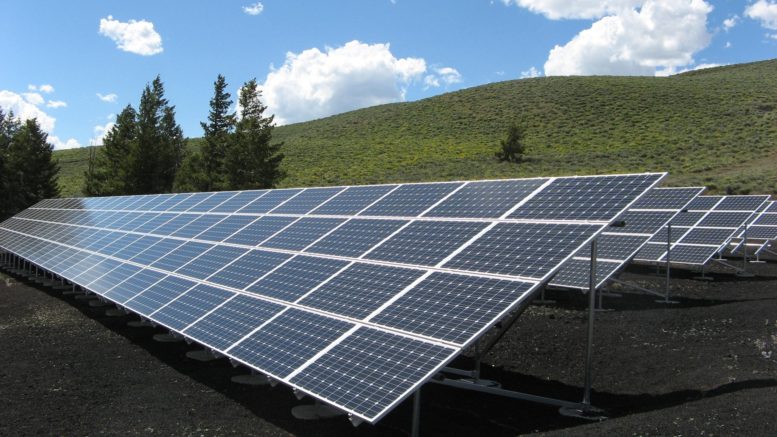Appalachian Power is looking for solar and wind power over the next three years to meet renewable energy targets established by the Virginia Clean Economy Act.
The law, passed in 2020, requires the utility to file an annual plan on how it will hit carbon-free status by 2050.
Last week, Appalachian Power filed an update to the plan showing short-term plans of adding 500 megawatts of solar and wind power over the next three years. By 2040, Appalachian Power expects to add another 3,300 megawatts of solar, 3,000 megawatts of wind and 2,600 megawatts of energy storage.
The company said the largest project in its short-term plan would add 204 megawatts of wind energy to the company’s portfolio and is expected to be operational in December 2024. The Illinois project will be ApCo’s largest wind project so far. The company is looking to recover the costs associated with buying the Illinois facility and two smaller solar projects, one in Berkeley County, West Virginia, and another in Amherst County, Virginia.
Appalachian Power also plans to buy a 150 megawatt solar plant in Pittsylvania County, Virginia, along with three other solar facilities.
“This is our company’s most extensive filing yet,” said Chris Beam, Appalachian Power president and chief operating officer. “The update filed with state regulators reflects the in-depth analysis necessary to ensure sufficient resources are in place to provide affordable and reliable power for our customers while continuing to build our renewables portfolio and meet our VCEA requirements.”
The company is considering adding energy storage to improve reliability for customers who receive power from the company’s Glade Station – White Top circuit in Southwest Virginia. The energy storage project would improve reliability by providing a back-up source of power when an outage occurs. Although included in the filing, the project is still in the planning stages.
Customer bills are expected to increase as the company adds more renewables to comply with the VCEA’s requirements. Any increase related to this filing will depend on a variety of factors including customer class, usage, and regulatory outcomes. If approved as requested, residential customers using 1,000 kilowatt hours (kWh) a month will see an approximate $2.37 increase in their monthly bill.





